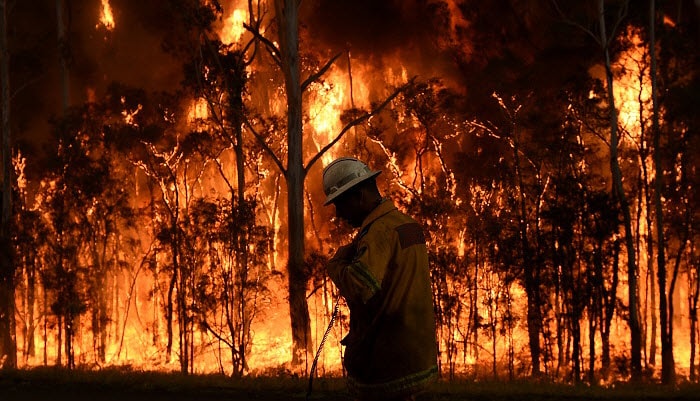From Assessment to Action: Utilizing Your BAL Report to Minimize Bushfire Ris
Wiki Article
Ensuring Bush Fire Defense Through Correct BAL Record Evaluation
In the realm of bush fire defense, the precise evaluation of Bushfire Attack Level (BAL) records stands as a keystone for securing properties versus the destructive impact of wildfires. With environmental factors and property attributes playing significant functions in establishing the level of threat, an extensive understanding of BAL rankings ends up being vital.
Recognizing Bushfire Attack Level (BAL)
In the world of bushfire defense, understanding the Bushfire Attack Level (BAL) is vital for making certain effective mitigation methods. BAL is a system made use of to measure the prospective danger a structure might face from a bushfire. It thinks about variables such as the sort of plants, the incline of the land, the Fire Threat Index, and the Fire Seriousness Index. Comprehending the BAL ranking of a building is crucial for residential property builders, proprietors, and policymakers to execute appropriate steps to protect against bushfire risks.
Significance of BAL Report Analysis
An essential aspect in bushfire defense preparation entails the thorough evaluation of BAL records to examine the prospective dangers and identify proper mitigation techniques. BAL records supply important info regarding the possible influence of bushfires on a residential property based on different variables such as vegetation kind, range to prospective fire risks, and slope of the land. Assessing these records with precision is extremely important in creating effective bushfire defense procedures tailored to the details danger profile of a property.Executing Fire Protection Actions
Implementing efficient fire security actions is important for guarding properties in bushfire-prone areas. This includes clearing up flammable plant life, such as dry leaves and branches, within a specific span of the building.Moreover, having a ample and properly maintained water supply, such as a container or swimming pool, can assist firemens in their initiatives to safeguard the home. It is necessary to have a clear emptying strategy in position and to make sure that all homeowners are acquainted with the treatments. Furthermore, having firefighting tools conveniently offered, such as hose pipes and fire extinguishers, can aid in dealing with little area fires before they rise. Generally, carrying out a combination of these fire protection actions can dramatically boost the chances of safeguarding residential or commercial properties during bushfire occasions.
Mitigating Threats in Fire-Prone Areas
To strengthen residential or commercial properties versus bushfire threats, a strategic focus on mitigating threats in fire-prone areas is critical. Mitigating dangers in fire-prone locations involves a thorough technique that incorporates various procedures to lower the possibility and my website influence of bushfires. One important facet of risk mitigation is keeping defensible space around properties by removing combustible greenery, making sure ample spacing between trees and structures, and utilizing fire-resistant landscaping methods. In addition, implementing ember-proofing measures such as mounting metal mesh displays on windows and covering roofing cavities can aid avoid ash assaults and minimize the risk of place fires.Moreover, building or retrofitting buildings with fire-resistant products and making sure appropriate maintenance of roofs, gutters, and exterior cladding can dramatically improve the building's resilience to bushfires. Developing and exercising a bushfire emergency situation plan with all occupants, consisting of evacuation treatments and interaction methods, is also vital in mitigating dangers efficiently. By taking on a positive approach to take the chance of mitigation in fire-prone locations, residential property owners can much better secure their assets and boost overall bushfire readiness.
Ensuring Home Safety and Strength
Making sure the safety and strength of residential properties in fire-prone areas calls for an unwavering commitment to durable safety nets and tactical preparation. Home safety and security begins with carrying out reliable steps to decrease fire threats. This includes preserving a defensible area around the property by removing combustible plant life, ensuring appropriate upkeep of rain gutters and roof coverings, and using fire-resistant building products. Normal linked here maintenance of firefighting devices, such as tubes and automatic sprinkler, is also important to building resilience.Resilience, on the other hand, involves the ability of a residential or commercial property to stand up to and recoup from a bushfire. This can be enhanced through the installment of ash guards on home windows and vents, guaranteeing that entrance points for coal are decreased. In addition, having a well-balanced emptying plan and practicing it on a regular basis can substantially boost residential property durability. Collaborating with next-door neighbors and regional fire authorities can also bolster the safety and security and durability of residential or commercial properties in fire-prone locations. By proactively dealing with these facets, building proprietors can better secure their assets and enjoyed ones from the danger of bushfires.
Verdict
In final thought, making certain bushfire defense through appropriate BAL record evaluation is critical for comprehending the degree of threat postured by bushfires and implementing required fire security measures. By reducing threats in fire-prone locations and guaranteeing property security and durability, people and areas can much better get ready for and react to bushfire events. It is necessary to focus on fire safety measures to safeguard lives and building in these risky environments.In the moved here realm of bush fire security, the thorough analysis of Bushfire Attack Level (BAL) reports stands as a cornerstone for protecting residential properties versus the damaging influence of wildfires (BAL Report). Understanding the BAL ranking of a residential or commercial property is important for property home builders, owners, and policymakers to apply ideal measures to safeguard against bushfire threats

BAL reports offer vital details about the potential impact of bushfires on a residential property based on numerous aspects such as plant life kind, distance to possible fire hazards, and slope of the land (BAL Report). Overall, executing a combination of these fire security steps can substantially boost the opportunities of guarding properties throughout bushfire occasions
Report this wiki page